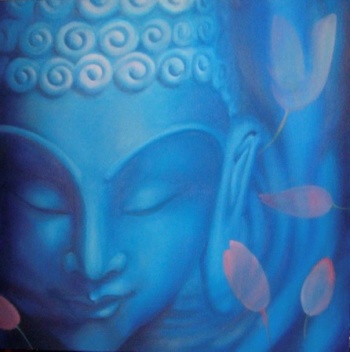The Jhanic Experience
JHANA: The word Jhana (Sanskrit: Dhyana) implies essentially, the process of transmuting the lower states of consciousness into higher transcendental states leading to the summit of progress in meditative training.
The majority of followers of the Theravada tradition hold Jhana in awe, for they believe that attaining the Jhana do not lie within the capability of lay persons.
Fortunately, during the last few decades there has been a resurgence of the vipassana practice by lay persons, some of whom are reported to have been quite successful in their endeavors.
However, they are yet diffident in even attempting to extend their meditation practices to the field of the Jhana.
This may perhaps be due to the scarcity of monks and lay persons adept at achieving even the four material jhana.
The Jhanic journey
The purpose of this essay is to explain, substantiated by textual information, how one should, by proper application and striving, be able to attain to the four material Jhana.
But there is a proviso. It is that the person who wishes to proceed along this path, should be conscientious and dedicated to the task in hand, and not be discouraged by the pace of progress.
or the Jhanic journey could be short or it could be long, depending on the temperament, mentality and dedication of the individual learner.
Nevertheless success in the end is within a person's reach. It must also be kept in mind that there can initially be no 'instant Jhana'.
One can attain the Jhana only by exercising unlimited patience and proper application, and by having the constant guidance of an experienced and accomplished teacher.
Finally, the meditator should also have previously had some experience in vipassana meditation and should thereby be familiar with the five hindrances that prevent a meditator from concentrating and remaining without straying on the object of his meditation. T hese hindrances are:
Sensual desires (kamacchanda) Ill-will (vyapada) Sloth and torpor (thina-middha) Restlessness and scruples (uddhacca-kukkucca), Perplexity or doubt (vicikiccha).
Therefore it is appropriate to first briefly discuss these hindrances that need to be eliminated, before discussing the psychic factors, which characterize the Jhana.
Meditators would have experienced to various extents the five hindrances in their daily meditation on in-and-out breathing or anapana-sati. They would then have learnt to temporarily get rid of them.
But now, a deeper understanding is required.
For, without coming to terms with them, vipassana meditation leading to the Jhana is not possible. Bhikkhu Bodhi discusses these hindrances in the following manner:
Two methods
"The elimination of the hindrances prior to attaining the Jhana is brought about by means of two methods, one specifically directed to each hindrance separately, the other applicable to all at once.
The former is to be employed when a particular hindrance obtrudes itself with persistent force, the latter on other occasions when no one hindrance seems especially conspicuous.
The specific method involves the reversing of the causal situation out of which the hindrance develops. Since each defiling factor is a conditioned phenomenon coming into existence through distinct causes, the key to its elimination lies in applying the appropriate antidote to its causal base.
Thus sensual desire arises on account of unskillful attention to the attractive features of things, to alluring objects and physical bodies. It is attenuated by considering the impermanence of the objects of attachment, and by reflecting on the repulsive nature underlying the attractive appearance of the bodies that arouse desire.
Ill-will or anger also springs up from unskillful attention, in this case the unpleasant aspects of persons and things; it is reversed by developing loving kindness towards disagreeable people and patience in the face of unfavourable circumstances.
Sloth and torpor become prominent by submitting to moods of sloth and drowsiness; they are dispelled by the arousal of energy. Restlessness, worry and regret arise from attending to disturbing thoughts and are eliminated by directing the mind to an object conducive to inner peace.
And doubt, grounded upon un-clarity with regard to fundamental points of doctrine, is dispelled by clear thinking and precise analysis of the issues shrouded in obscurity".
For a further comprehension of the hindrances, there is in the suttas a vivid simile illustrating the manner in which they obstruct clarity of the mind, summarised as follows:
'Imagine a pond of clear water where a rare gem lies at the bottom. We now add a number of bright dyes to the water, which then takes on beautiful psychedelic patterns.
We become entranced with the beauty and intricacy of the colours and do not penetrate to the depths. This can be compared to sensual desires.
Anger, ill will and aversion can be compared to boiling water. Water that is boiling, as in a geyser, is very turbulent and we cannot see through to the bottom. Sloth and torpor are like the pond getting covered by a dense layer of algae.
One cannot possibly penetrate to the bottom. Restlessness, worry and regret are like a wind-swept pond. The surface is agitated and the bottom is impenetrable. Doubt is like the water when muddied; the bottom is obscured'.
The first (material) Jhana
Its five psychic factors. There are in the first Jhana, five psychic factors namely: Vitakka, Vicara, Piti, Suka and Ekaggata.
These factors can bring about a complete (though temporary) suspension of the fivefold sense activities. Entry into the Jhana is then possible.
These factors also simultaneously help in consciously expelling from the mind the five hindrances (nivarana) to the Jhana.
